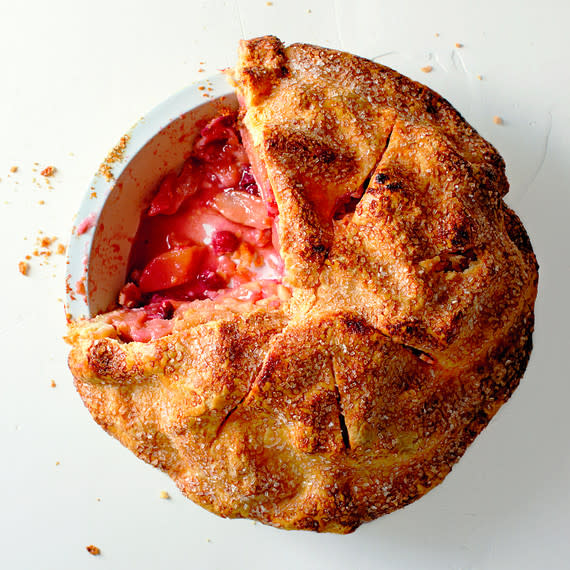What's the Best Pie Filling Thickener?

It's pie season! Are you ready? You have your favorite pie crust recipe, and all of the ripe, farm-fresh fruit, but there's one more thing you need in order to serve picture-perfect wedges of pie: the right thickener to transform the cooked fruit's juices from runny mess to luscious, slice-able filling. Some pie recipes thicken the filling with flour; others use cornstarch, while others still rely on tapioca. What's the difference between each, and how do you choose the right one for your recipe?
All of these thickeners work in approximately the same way: Heat causes the starches in the thickeners to bond with the liquid in the pie filling and begin to swell, forming a more stable structure. This is why pie filling doesn't get thick until it's cooked. The difference between the thickeners is mostly about how they look and taste, the temperature at which they begin to thicken, and how long they hold their structure after cooking.
Related: Essential Tools for Baking Pies
Flour as Pie Filling Thickener
Teaspoon for teaspoon, you will need to use about twice as much flour as you would cornstarch or tapioca to achieve the same thickening effects. Adding too much flour to your pie filling will turn it cloudy and pasty, with a distinctly floury taste. For this reason, flour works best with fruits that are less juicy, and/or are naturally high in pectin—a naturally occurring thickening agent—such as apples and blueberries.
Cornstarch as Pie Filling Thickener
Just like the name suggests, cornstarch is derived from corn. Cornstarch is faster-acting than flour and forms a smooth, relatively clear filling. Just be aware that too much cornstarch can create a slimy texture. When cornstarch is combined with acidic ingredients such as rhubarb or lemon juice, it can cause the texture to break down over time. This isn't a problem if you expect your pie to get gobbled up in one day, but if you're looking forward to leftovers, or if you plan to freeze your pie, it's best to use a different thickener.
Tapioca as Pie Filling Thickener
Tapioca—it's not just for pudding! This old-school ingredient may be what your great grandmother used to thicken her pies, and it's still great for making a perfect fruit pie with a clear, stable filling. Tapioca is derived from cassava (also known as yuca or manioc), a starchy root native to South America. Tapioca comes in several different forms, but the one you want for pie-making is instant (otherwise known as quick-cooking) tapioca. When using tapioca as a thickener, allow the pie filling to sit for at least 15 minutes to absorb the juices before spooning it into the crust. Tapioca can be substituted in a one-to-one ratio for cornstarch.
